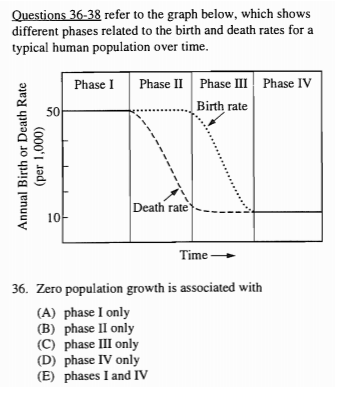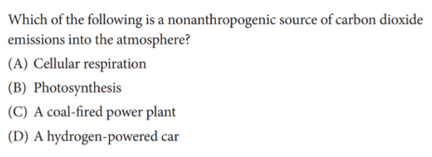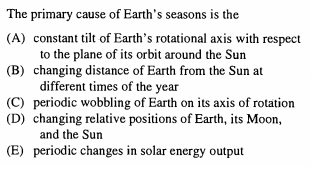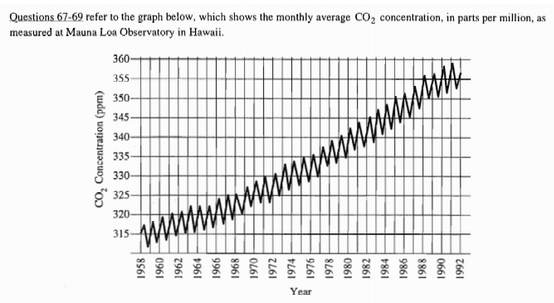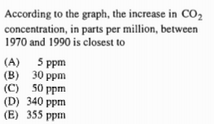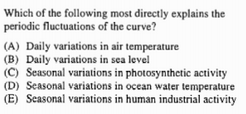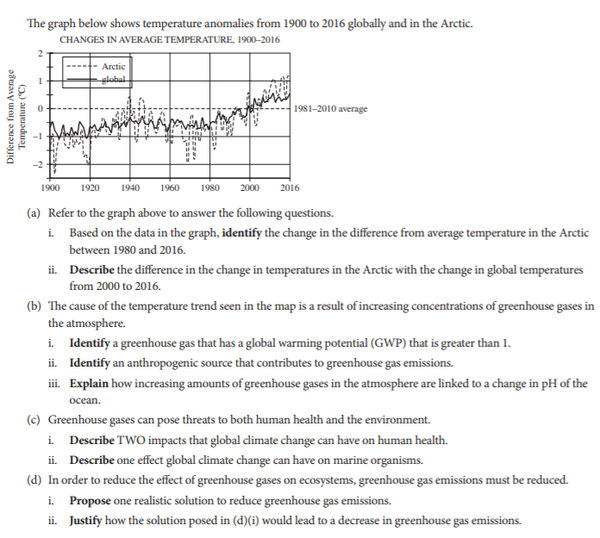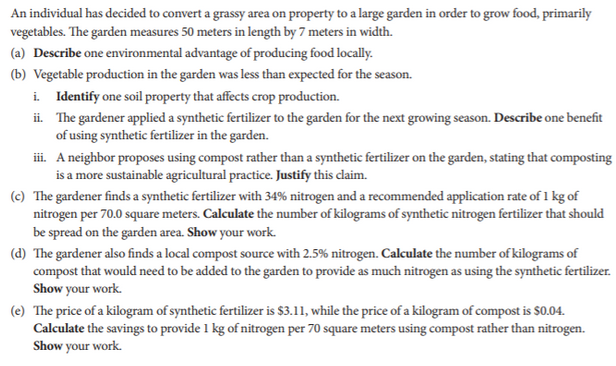10 Hardest AP Environmental Science Questions
What’s Covered:
- How Will AP Scores Impact My College Chances?
- Overview of the AP Environmental Science Exam
- 10 Hardest AP Environmental Science Questions
- Final Tips
This post will cover some of the more difficult AP Environmental Science questions and what makes them so challenging — then we’ll show you how you can get them right. We also offer a walk through of the exam: what kind of questions you’ll encounter, what things to study for, and what else to expect from the exam.
How Will AP Scores Impact My College Chances?
Even if you get a perfect score on this test, colleges will pay little mind to it. College admissions officers are much more concerned with course rigor and GPA. They’ll be very impressed that you took the AP level course, but won’t look at your final score.
The more important measure of your performance is how well you do in the course while preparing for the exam. To better understand how your course load affects your chances, use our free chancing engine. It will let you find out your odds of acceptance to over 500 colleges across the country. Your chances are calculated taking your grades, extracurriculars, demographics, and other factors into account. The only thing CollegeVine’s chancing engine does not account for are written deliverables, such as personal statements and letters of recommendations. But, we have resources to help guide you through the writing process.
Overview of the AP Environmental Science Exam
Structure
The test is divided into two sections, a 90 minute multiple choice portion and an accompanying 70 minute free-response addendum. This test is longer than other AP exams so some testing facilities will allow students to take a break between sections.
The first section of AP Environmental science exam is worth 60% of the final score and consists of 80 multiple choice questions. These questions cover topics including earth systems and resources, the living world, population, land and water use, energy resources and consumption, pollution, and global change. The questions focus on vocabulary, natural processes, and ecosystem nomenclature.
The second section is worth the other 40% of the final score and has just three free-response questions. Although this seems much easier than Section II, the free-response questions are multi-part and require a lot of critical thinking. Section II provides three point scoring opportunities: a Design Investigation problem, an Environmental Analyzation/Solution Proposition problem, and an Environmental Analyzation/Solution Proposition problem that includes calculations. Each of these problems is worth 10 points towards the total. You will have about 23 minutes per question. You could also spend 15 minutes on one question and 30 on the other.
Scoring
In 2019, fewer than half of students scored a 3 or higher. The mean score was a 2.86. It’s one of the lowest test scores among test takers. Students do most poorly on Section II, the free-response questions.
If you’re feeling nervous after reading this, fear not! With a little help, you can conquer this exam. The key to getting the AP Environmental Science questions right is to know what sorts of questions are going to be asked.

[amp-cta id="9459"]
10 Hardest AP Environmental Science Questions
We will go over both tough multiple choice questions and then free response questions.
The multiple choice questions are often quizzes on vocabulary. To ace Section I, study the vocabulary from all sections. More than knowing what the Stratosphere is, you should be able to place it in the correct order of atmospheric layers (between the Troposphere and Thermosphere).
To score highly in Section II, you must be able to apply the curriculum to identify problems and suggest solutions. The questions ask for diagnoses and responses to environmental hazards so it is crucial to know not just the symptoms, but also the causes of environmental degradation.
Multiple Choice Questions
1.
Answer: E
The answer to the above question is E. It is critical to understand the included graph. The y-axis shows the annual birth or death rate (per 1,000), meaning that whenever the line changes vertically, the birth or death rate is changing. When it remains stagnant, there is no change, or no population growth. The two phases in which the lines are flat are I and IV.
2.
Answer: A
The cellular respiration of plants is a nonanthropogenic source of carbon dioxide emissions. The other three answers are wrong because photosynthesis does not produce carbon dioxide and the other two answers are anthropogenic. Anthropogenic means “man-made” so something nonanthropogenic is a fancy way of saying natural. A coal-fired power plant and a hydrogen-powered car are both unnaturally occurring processes.
3.
Answer: C
To answer this question, a student must understand the visual. It is called a “biomass pyramid” and shows the direction of the food chain. Starting at the bottom, the biomass pyramid displays which organisms gain energy from which other organisms. Snakes gain energy from mice which gain energy from grasshoppers which gain energy from grasses. Knowing that an herbivore only eats plants, the answer is C.
4.
Answer: B
The ozone does not block all rays from reaching the earth. It does diminish the intensity of all rays, but it is the strongest absorber of ultraviolet rays. Ultraviolet light is very harmful upon direct skin contact. It causes sunburn on our skin and cataracts in our eyes.
5.
Answer: A
The Tragedy of the Commons refers to the human behavior of taking more than your fair share of a public good. For example, if there are four shepherds each herding their sheep around a central pasture, it would be fair if they each took a quarter of the available land. As soon as one shepherd begins to encroach their herd farther into the center of the field, because none of the other shepherds had ventured that far, there may be more competition for this land. This leads to all shepherds trying to take the land for their private herd, thereby overgrazing it and destroying it.
6.
Answer: A
The answer to the above question is A, the constant tilt of the Earth’s rotational axis. This can be difficult for students because they may be familiar with the second part of this answer. They may know that it was due to the tilt, but the phrase “with respect to the plane of its orbit around the sun” may throw some students off, instead opting for the incorrect answer “periodic wobbling of Earth,” an answer that feels almost correct.
7.
Answer: B
This question can be simple if the test-taker can read the graph correctly. Time is displayed on the x-axis increasing to the right. The y-axis displays the parts per million (ppm) for the CO2 concentration starting at 315. This can be confusing for students that think the graph starts at 0. The question asks you to find the difference between 1970 (~325) and 1990 (~355). The difference between these two numbers is around 30ppm.
8.
Answer: C
As plants begin to photosynthesize in the spring and summer (seasonal variation), they use the CO2 present in the atmosphere and consume it as a carbon source for reproduction and growth. We are not talking about daily variation as in choice A and B because the description of the chart tells us it’s the monthly average of CO2 concentration.
Free Response Questions
The free-response questions are extensive and convoluted at first glance. Students shouldn’t fear the free-response question because they are ultimately very similar to the multiple choice section in that they ask straight-forward questions.
9.
Part a: The answers to part a are “increased 1.5 degrees C” and “Temperature rising at a greater rate than in the arctic.” These answers come straight from the graph!
Part b: Accepted answers for part b are “CFC’s,” “Methane,” or “Nitrous Oxide.” You should identify “Burning of Fossil Fuels,” “Deforestation,” “Use of Fertilizer,” or similar responses. You should explain how higher global temperatures contribute to increased acidification.
Part c: You must include any two adverse human health effects and any description of how ocean warming changes marine life. This could be “changing migration patterns” or “altering reproductive rates and sex ratios in certain species.”
The final section asks the test-taker to propose a solution to greenhouse gas emissions and justify its validity. Here you should list any green efforts you know. For example, “energy efficient vehicles,” “using less heat,” and “purchasing less plastic” are all valid answers.
10.
This is one of the free-response questions that includes calculations. If math isn’t your strong suit, don’t be discouraged — not all the answers require math.
Part a: This section simply asks for a benefit of local food production. You could say anything from “Reducing CO2 emissions” to “increased food security” to “improvement of soil quality.”
Part b: This question presents a problem with the production and asks what one cause could be. You must explain the benefits of the proposed solution, and the benefits of a counter proposal. The important step for this question is understanding that both proposed solutions have validity. Synthetic fertilizers are inexpensive and have nutrients that are more readily taken up by plants whereas compost doesn’t harm the environment in its production and reduces the amount of atmospheric methane.
Part c: Here is a walk through of the calculation:
Garden area = 50m x 7m = 350 m
Solution: 5.0 kg . Even if you don’t get the right answer, you still get a point for the correct setup of an equation.
Part d: Here is the setup for the equation:
Solution: 68 kg. Again, even if you mess up the math, if you set up the calculation right you will get partial credit.
Part e: Calculate the savings to provide 1 kg of nitrogen per 70 square meters using compost rather than nitrogen.
Difference in cost: $15.55 − $2.72 = $12.83 per kg
Final Tips
Know what to expect
Paramount to your test taking success is knowing what to expect. After reading this article, you should talk with your teachers to figure out what your school’s testing experience will be like. Your school may have different practices, protocols, and conditions for administering the AP Environmental Science exam.
Study vocabulary
To do the best on the AP Environmental Science questions, you should read up on the vocab. The test covers topics fairly evenly from the concepts throughout the course so you cannot go wrong when looking over all the material evenly.
Start preparing early
The content of the AP Environmental Science exam isn’t as hard if you’re able to spend time preparing. By learning new vocabulary each day, you can greatly increase your chances of scoring well, especially on Section I. Control the factors you can!
Check out these CollegeVine resources for more help with your studying:

